I said I would fill you in occasionally with details and photos of my daily routine.
Today started early and, as most days, it was rather long. I was at it by 0630. After Mass, office, scanning news, catching up on the Pope in Turkey, lunch with a friend (a fellow staff member of the COL Forum) I have been on the fly until meeting some folks for supper… mercifully at a place near where I live. It is nearly 1 am now.
Lunch was at one of my favorite places for its balance of high quality food, friendly folks, and good prices and great location. You will rarely go wrong at Polese. If you go, tell ’em Fr. Z sent you.
Today’s bonus was the surprise that they had some telline. Telline are tiny little clams, smaller and with a different flavor than the usual clams one gets here, vongole.
This is what telline look like:
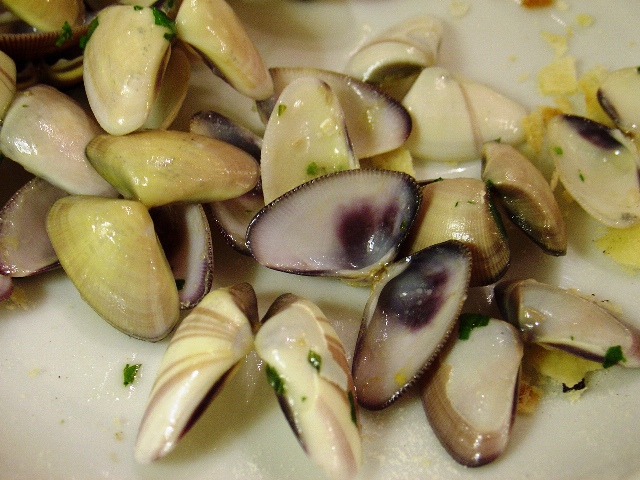
Eating these little things is like eating the ocean. They have a much more intense flavor that the vongole. Alas, they are becoming very rare. I don’t remember the last time I saw them in Rome, though I would get them more often down in the castelli romani. Just to give you some scale…
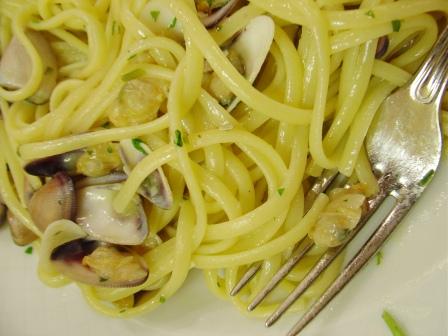
See how small they are? They are a lot of work, but worth it. And if you want to wash ’em down, try a cold Orvieto…
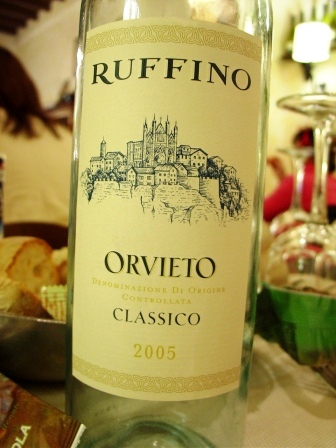
The only problem is that after such a pleasant lunch you then have to go back to work!
This afternoon found me back in the reference room of the library of the Augustinianum, the Patristic Institute located next to St. Peter’s Square.
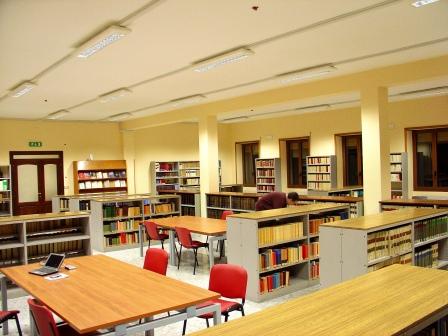
You can see my little notebook computer on the table.
I made my way through St. Ambrose’s funeral oration for the Emperor Theodosius this evening, Here is a snip:
Ambrose is talking about the mother of Constantine, St. Helena and how under the influence of the Holy Spirit she found the instruments of the Passion. She had one of the nails put into a diadem for Constantine and another into the bridle for his horse. It is interesting to read this and think about how Pope Benedict is trying to remind people of the authentic roots of Europe. In any event, Ambrose says:
48. Wisely did Helena act who placed the cross on the head of sovereigns, that the Cross of Christ might be adored among kings. That was not presumption but piety, since honor was given to our holy redemption. Good, therefore is the nail of the Roman Empire. It rules the whole world and adorns the brow of princes, that they may be preachers who were accustomed to be persecutors. Rightly is the nail on the head, so that where the intelligence is, there may be protection, also. On the head, a crown; in the hands, reins. A crown made from the Cross, that faith might shine forth; reins likewise from the Cross, that authority might govern, and that there might be just rule, not unjust legislation. May the princes also consider that this has been granted to them by Christ’s generosity, that in imitation of the Lord it may be said of the Roman emperor: ‘Thou hast set on his head a crown of precious stones.’ (Ps. 20.4)
Here is the entrance to the Augustinianum after the close of the library.
After a walk home of about a half hour, catching up on some e-mail, some reading, more office, some phone calls and a change of clothes, I hit the cobbles again to meet people for supper. Tonight for supper (no camera, sorry) it was rigatoni all’amatriciana followed by very rare entrecôte accompanied by a sturdy Primitivo from Puglia.

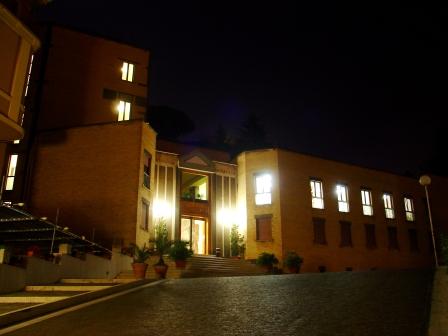

































Fr. Z:
I didn’t know Ambrose spoke English. And he writes it very well too. The things you find out on this blog! Perhaps he also drank Orvieto Classico?
I recognize the entrance to the Augustinianum. The one time I was there I turned in a paper I had written for Fr George Lawless.
It turned out he didn’t much care for it, said that there were so many ideas on the first page that he thought his head would explode. My response, which I kept to myself, was that such an explosion would resemble trying to strike a wet match.
GL, however, turned out to be a bit of a friend who used to show up for pranzo now and then at the Convitto at the request of the rector. A very funny man–especially when the name Elaine Pagels rears its (her) ugly head.
BTW, Orvieto (Urbs Vetus) is one of the many beautiful spots in Italy, a walled city about a 45 min train ride from Rome. It was where St Thomas, who was there with the papal court, put together the Catena Aurea.
Orvieto wines are easily available (even here in Texas which has some odd liquor laws).
Yes, I agree with RBrown, it is a beautiful city, set atop an outcrop of tufa, just like on the bottle above. It’s sort of like a city built on a small mesa. The main church there is beautiful. It’s easy to get to by train from Rome.
The first time I went there was the first time I ever had Spaghetti Carbonara. That has to be one of the most unhealthy meals I have ever had, with all the cheese, cream, and pancheta (which was more fatty than meaty), but it was sooooooo good. ;)
Down below the town is a former monastery that is now a hotel. The restaraunt there is prety good.
Orvieto wines are easily available (even here in Texas which has some odd liquor laws).
Yes, and i vini Albani (e.g., Frascati) are also available. But those Italian white wine don’t really travel well.
Yes, I agree with RBrown, it is a beautiful city, set atop an outcrop of tufa, just like on the bottle above. It’s sort of like a city built on a small mesa. The main church there is beautiful. It’s easy to get to by train from Rome.
The fascade of the Church is gold leaf. In it is preserved the corporal from the Eucharistic miracle of Bolsena.
Did you go to St Patrick’s well?
The first time I went there was the first time I ever had Spaghetti Carbonara. That has to be one of the most unhealthy meals I have ever had, with all the cheese, cream, and pancheta (which was more fatty than meaty), but it was sooooooo good. ;)
Down below the town is a former monastery that is now a hotel. The restaraunt there is prety good.
Almost all the restaurants in Italy are at least pretty good. There is one on the beach at Sperlonga (where friends have a house) that has the best aglio olio I have ever eaten.
BTW, Carbonara, which also uses eggs, is actually fairly easy to make, not to mention eat, unhealthful or not. On the other hand, I have had almost no luck making good aglio olio
RBrown: “Almost all the restaurants in Italy are at least pretty good. ”
Alas, this is no longer the case.
Fr. Z, you should put a list of your favorite/ good restaurants to go to in Rome, or else where in Italia, so the rest of us dont make any blunders..
Thanks
This sounds like really rough work, but I guess someone has to do it.
I spent most of the day slogging through well over a thousand sheets of page proofs of a mathematics textbook in press. Obviously, my life would be easier if I were not so wordy. But I did take off a few minutes for lunch, which consisted of a bowl of shredded wheat, a handful of jumbo California raisins, and a small piece of Wisconsin cheddar, washed down by a fine (and quite recent) vintage of American diet Coke.
I had some leftover turkey from Thanksgiving, precisely a week old (aged to perfection) with a piece of polenta heated up in the microwave and for vegetable some boiled cabbage that I accidentally (providentially?) found at 5:30 in the morning hiding in the back of the fridge stored in a plastic bowl. It passed the nose test (if not the color test) and some five hours later became a welcome addition to my lunch which I ate in about three and a half minutes trying to get away in a hurry from a coworker who kept questioning me about how many times I ate turkey that week.
A cup of lukewarm water from a styrofoam cup was used to wash down the entire delight. I’m looking forward to eating the rest of the turkey as the days roll by.
The fascade of the Church is gold leaf.
The first time I went it was (as is often the case in Italy) under scaffolding. Thankfully when I returned 13 years later, it was unobstructed.
In it is preserved the corporal from the Eucharistic miracle of Bolsena.
I was able to assist at a friends first Mass in that chapel after he was ordained.
Did you go to St Patrick’s well?
Yes, that was very interesting in seeing a well that allowed a horse and cart to go down to the bottom, if I remember correctly.